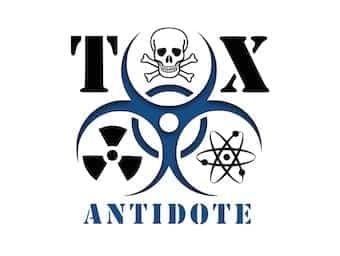
Digoxin toxicity: Management
Dr Betty Chan, emergency physician and clinical toxicologist, discusses the DORA trial and digoxin toxicity - 1 or 2 amps of immune fab only, no maths required - and explains why less is more.

Dr Betty Chan, emergency physician and clinical toxicologist, discusses the DORA trial and digoxin toxicity - 1 or 2 amps of immune fab only, no maths required - and explains why less is more.

An essential co-factor in the synthesis of clotting factors II, VII, IX and X. It is used for the reversal of coumadin-induced coagulopathy.

Sugammadex is used for reversal of the amino steroid neuromuscular blocking drugs rocuronium, vecuronium and pancuronium. It does not work on non-amino steroid neuromuscular blocking drugs (atracurium, cisatracurium and suxamethonium).

Succimer (DMSA) is an orally active metal chelator is used to treat heavy metal poisoning. In adults Succimer is used for symptomatic lead poisoning or in patients who are asymptomatic with levels >60 micrograms/dL (>2.9 micro mol/L). In paediatrics it is used for symptomatic lead poisoning or in patients who are asymptomatic with levels >45 micrograms/dL (>2.17 micro mol/L).

Sodium Thiosulfate enhances the endogenous cyanide detoxification capacity of the body. It is suitable to use alone in the treatment of mild to moderately severe cases of cyanide poisoning but should be used in conjunction with other antidotes such as hydroxocobalamin in severe cyanide toxicity.

Hyperosmolar sodium bicarbonate solutions are widely used in clinical toxicology both as an antidote to drugs that impair fast sodium channel function and as an alkalinising agent to manipulate drug distribution and excretion (salicylate and phenobarbitone). It is also used in profound metabolic acidosis with cyanide, isoniazid and toxic alcohol toxicity.

Sodium Calcium Edetate (EDTA) is an intravenous heavy metal chelating agent. EDTA is primarily used in the treatment of severe lead poisoning with or without lead encephalopathy or an asymptomatic/mildly symptomatic patient with a serum lead level >70 microgram/dL (3.38 micro mol/L).

Intravenous pyridoxine is used in high doses to control the metabolic acidosis and seizures associated with isoniazid overdose and poisoning from other hydrazine compounds (Gyromitra mushrooms and jet/rocket fuel). It is also used as a adjunct to ethylene glycol toxicity

Pralidoxime reactivates acetylcholinesterase only if irreversible binding to the OP has not already occurred ("ageing"). The acetylcholinesterase enzyme has two parts to it. In organophosphate poisoning, an organophosphate binds to just one end of the acetylcholinesterase enzyme (the esteric site), blocking its activity.

A reversible acetylcholinesterase inhibitor useful in the treatment of central anticholinergic delirium that is not easily controlled by benzodiazepine sedation and there is high risk for aspiration and excessive sedation. Only for those patients who have an isolated anticholinergic agent toxicity (not the polypharmacy overdose).

Long-acting synthetic octapeptide analogue of somatostatin useful in the control of sulfonylurea-induced hypoglycaemia (BSL <4 mol/L) either from overdose or an iatrogenic source. It is also useful in hypoglycaemia induced from Quinine.

Potent oral chelating agent for a broad range of heavy metals. Agent of choice in very few scenarios due to poor side-effect profile and the existence of better tolerated and more efficacious agents. If possible EDTA or Succimer should be used instead.